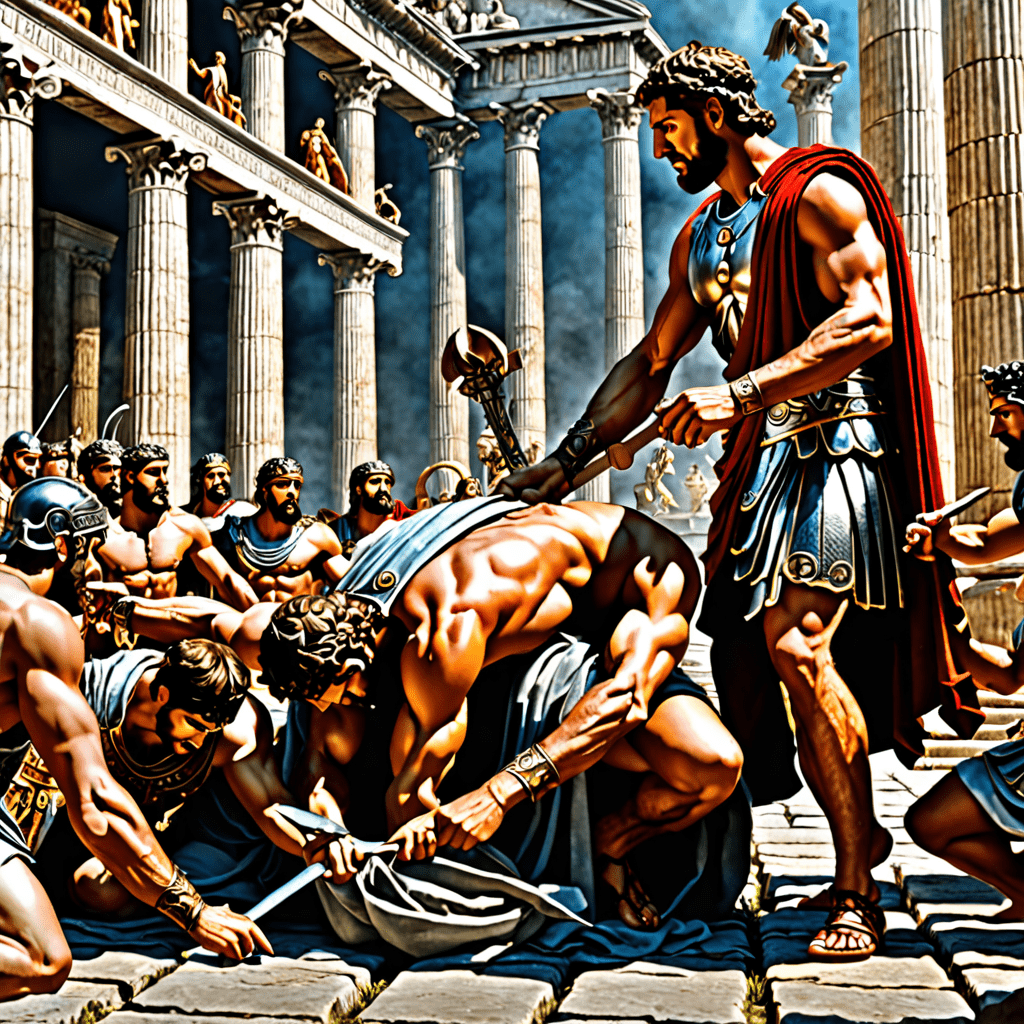The Story of the Sacred Rites in Native American Mythology
Introduction
Native American mythology is a vast and intricate tapestry of beliefs, stories, and traditions that have been passed down through generations. At the heart of these beliefs lies the concept of the sacred, which manifests itself in various rituals and ceremonies known as sacred rites. These rites play a crucial role in Native American culture, serving as a bridge between the physical and spiritual worlds and fostering a deep connection with the Great Spirit and the forces of nature.
The Great Spirit and the Creation of the World
According to Native American mythology, the Great Spirit, also known as Wakan Tanka in Lakota tradition, is the supreme being who created the world and all living things. The Great Spirit is omnipresent, omnipotent, and omniscient, embodying both masculine and feminine aspects. In many Native American cultures, the Great Spirit is seen as the source of all power, wisdom, and guidance.
The Origin of Sacred Rites
Sacred rites emerged from the belief that the Great Spirit had bestowed upon the Native American people a set of sacred teachings and instructions. These teachings revealed the proper ways to honor the Great Spirit, communicate with the spirit world, and maintain harmony with nature. Sacred rites became the means through which these teachings were practiced and passed down to future generations.
The Sun Dance
One of the most well-known sacred rites is the Sun Dance, a ceremony performed by several Plains tribes. The Sun Dance is a demanding physical and spiritual test that involves fasting, dancing, and self-sacrifice. Participants pierce their skin with skewers and attach themselves to a central pole, representing their connection to the Great Spirit and the forces of nature.
The Ghost Dance
The Ghost Dance was a sacred rite that emerged in the late 19th century among the Lakota people. It originated as a response to the severe social and cultural hardships faced by Native Americans during this time. The Ghost Dance promised a return to a golden age and the reunification of the living and the dead. It sparked a widespread spiritual revitalization and resistance movement.
The Sweat Lodge
The Sweat Lodge is a sacred rite practiced by many Native American tribes. It involves gathering in a small, enclosed structure heated with hot rocks onto which water is poured to create steam. Participants sit in the lodge, sweating profusely and engaging in prayers, songs, and rituals. The Sweat Lodge is seen as a way to cleanse the body and spirit, promote healing, and strengthen community bonds.
The Peyote Ceremony
The Peyote Ceremony is a sacred rite practiced by some Native American tribes, primarily in the Great Plains region. Peyote is a small, spineless cactus that contains mescaline, a powerful hallucinogen. During the Peyote Ceremony, participants ingest peyote and embark on a spiritual journey that involves visions, insights, and connections with the spirit world. The Peyote Ceremony is seen as a way to seek guidance, healing, and a deeper understanding of oneself and the universe.
The Medicine Wheel and the Vision Quest
The Medicine Wheel is a sacred symbol used by many Native American tribes. It represents the cyclical nature of life, the four directions, and the connection between all living things. The Vision Quest is a solitary ritual in which an individual seeks guidance and wisdom from the Great Spirit. It involves going into a remote location for a period of time, fasting, and engaging in prayers and meditations. The Vision Quest is seen as a way to connect with one's inner self, receive spiritual insights, and gain clarity on life's path.
Contemporary Adaptations of Sacred Rites
In recent times, Native American sacred rites have undergone adaptations to meet the changing needs of contemporary society. Some tribes have modified their ceremonies to make them more accessible and inclusive, while preserving their core spiritual principles. For example, some Sun Dances now allow women to participate in a more active role. Additionally, urban Native American communities have created new rituals and practices that blend traditional beliefs with modern urban contexts.
The Enduring Significance of Sacred Rites
Sacred rites continue to play a vital role in Native American culture today. They provide a means for individuals to connect with their spiritual heritage, seek guidance, and maintain a sense of community. While the specific form and practices of sacred rites may vary among different tribes, their underlying purpose remains the same: to honor the Great Spirit, foster harmony with nature, and cultivate a deep connection to the spiritual world.
Frequently Asked Questions
Q: Are sacred rites open to non-Native Americans?
A: The participation of non-Native Americans in sacred rites varies depending on the tribe and ceremony. Some tribes welcome respectful participation from outsiders, while others restrict participation to members of the tribe. It's important to approach any request to participate with humility and respect for the tribe's customs and traditions.
Q: Can sacred rites be performed for personal gain or financial profit?
A: No. Sacred rites are not to be commercialized or used for personal gain. They are intended to be solemn and respectful ceremonies that honor the Great Spirit and promote the well-being of the community.
Q: How can I learn more about Native American sacred rites?
A: Respectful engagement with Native American communities, attending educational events, and reading books and articles written by Native American authors are all ways to learn more about sacred rites. It's important to approach this learning process with humility and a willingness to listen and understand the perspectives of Native American people.



